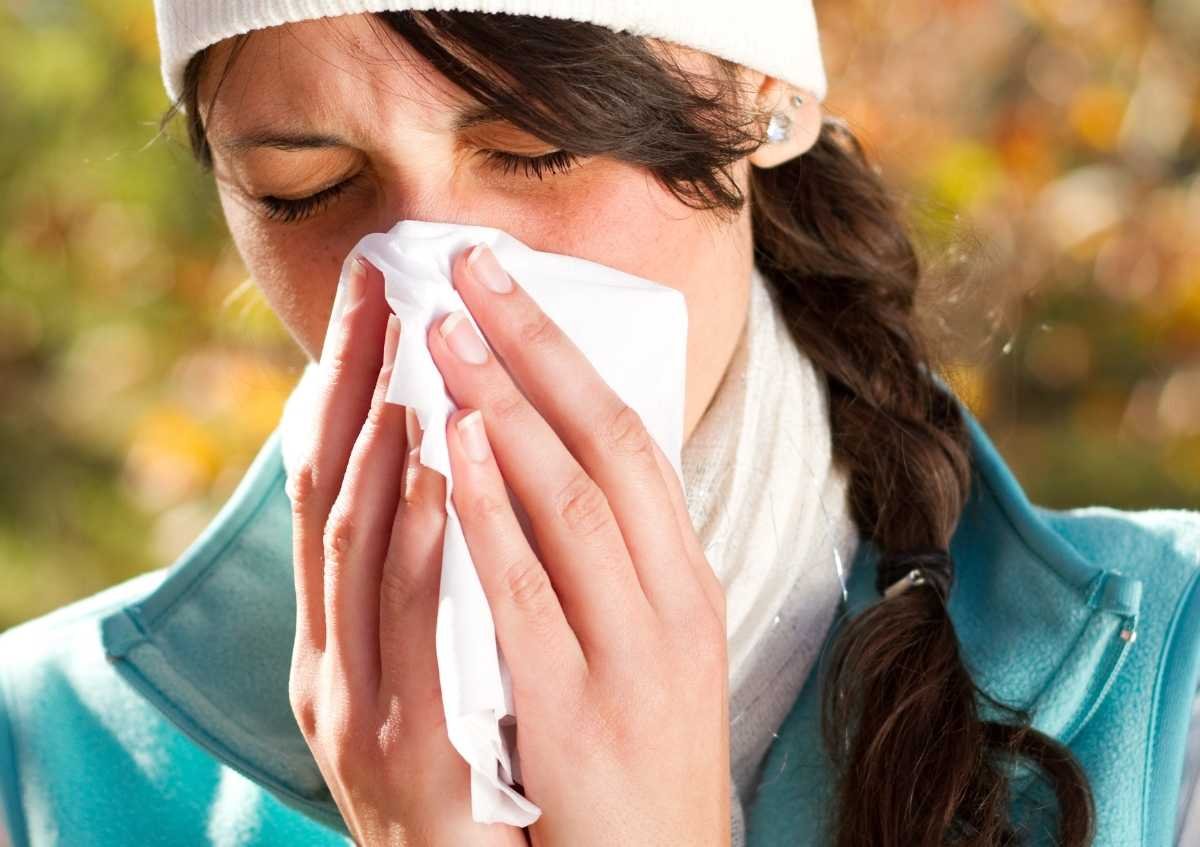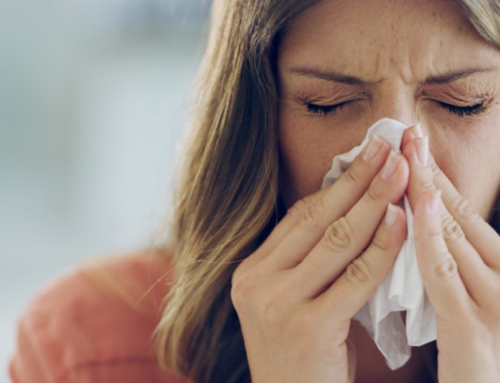Milliyet Newspaper – September 13, 2021
With the arrival of autumn, the air temperatures dropped significantly. These days when the windows were closed, some allergy symptoms also increased. Stating that the triggers of autumn allergies are different, but they can cause as many symptoms as in spring and summer, and some allergies may flare up in the fall, Istanbul Allergy Founder, Allergy and Asthma Association President Prof. Dr. Ahmet Akçay made important warnings.
What are the causes of autumn allergies?
An allergic reaction occurs when the immune system perceives a generally harmless substance as harmful and tries to fight it. There are multiple triggers that cause allergies in the fall. Both indoor allergens and outdoor allergens can cause an increase in symptoms. Pollen, mold spores, dust mites are common allergens that cause allergies in autumn.
Why do allergies worsen in the fall?
Exposure to some allergens may increase in the fall, and this increase may cause worsening of symptoms. While hay fever and allergies to trees are usually associated with spring, seasonal allergies can also increase in the first months of autumn. Cool autumn air contains irritants that can be as irritating as pollen. Increased exposure to mold spores and dust mites in the fall can also make your allergies worse. Especially the house dust mites increase in number during the change of seasons and increase the symptoms of allergic asthma, eye allergies and allergic rhinitis.
Your pollen allergy may search
Pollen allergies bring to mind the spring and summer months. However, in the fall, weed pollen can cause allergies in many people. Ruby pollen is the biggest allergy trigger in autumn. Although it usually begins to pollinate in August with cool nights and warm days, it can last until September and October. Even if it doesn’t grow where you live, ragweed pollen can travel hundreds of miles on the wind. In Istanbul, ragweed pollen is a type of pollen that can often cause allergies.
Mold spores can cause symptoms
Mold is another allergy trigger. Mold growth is common in basements or wet floors. However, wet leaf litter outside is also good ground for mold spores; moist leaf clumps are ideal breeding grounds for mold. You can be exposed to mold spores, both indoors and outdoors, and your allergy symptoms may worsen.
You may be more exposed to dust mites
Dust mites are also one of the common substances that cause allergies. Although common during the humid summer months, they can become airborne when heaters are turned on in the fall and cause sneezing, runny nose and wheezing. With the opening of schools, the incidence of flu infections and colds will increase a lot. Viral infections will trigger the symptoms of asthma and allergic rhinitis, and allergy symptoms will often be encountered.
Flu infections trigger allergic diseases
Especially with the change of seasons, cold and flu infections begin to be seen frequently. Influenza infections are the triggering factor that increases allergic diseases the most. For this reason, it may be very beneficial for children to be vaccinated against influenza infections.
Scents of cleaning materials increase allergy symptoms
Especially these days when we spend more time at home and children start school, the smell of cleaning materials can also trigger the symptoms of allergic diseases. Because the lungs of people with allergic asthma and allergic rhinitis are very sensitive.
What are the symptoms of autumn allergies?
Symptoms of allergies vary from person to person; Some people may have more severe symptoms. Typical symptoms of autumn allergies can be listed as follows: runny nose, nasal congestion, watery eyes, sneezing, coughing, wheezing, itching in the eyes and nose, bruising under the eyes.
What are the differences between autumn allergy symptoms and Covid-19 symptoms?
Allergy symptoms and the symptoms of the coronavirus can be confused with each other. Some COVID-19 and autumn allergy symptoms, such as cough and shortness of breath, are similar. However, the primary symptom of COVID-19 is high fever and fever is not an allergy symptom. Another key difference between COVID-19 and allergies is the spread. While allergies are not contagious, COVID-19 can spread from person to person. Among the symptoms of coronavirus;
Fire,
Cough,
Shortness of breath,
Sore throat and headache
Nasal congestion,
Muscle and body aches,
Include nausea, vomiting and diarrhea.
Allergy symptoms include itchy, runny nose, sneezing, cough, itchy watery eyes, redness, wheezing.
How are autumn allergies treated?
Depending on the cause and severity of your allergy, your treatment may vary. There are many medications you can use.
Steroid nasal sprays can reduce inflammation in your nose. Antihistamines help stop sneezing, sniffing and itching. Decongestants help relieve congestion and get rid of mucus in your nose.
Allergy vaccine therapy may provide a long-term solution
Allergy vaccine therapy, in other words immunotherapy, is a treatment recommended for people who use drugs for a long time and have severe symptoms. The aim of vaccine treatment is to make your body insensitive to the allergen. The success rate of this treatment, which is applied in respiratory allergens such as pollen, house dust, mold, is quite high. Although this treatment method, which is planned and performed by allergy specialists, is applied in the form of injections, some allergies can also be applied in the form of sublingual tablets.
Consult your doctor before using any over-the-counter medication
You can buy some allergy medications without a prescription, but talk to your doctor to make sure you’re taking the right one. For example, decongestant nasal sprays should only be used for 3-5 days. If you use them longer, your symptoms may recur. Or if you have high blood pressure, some allergy medications may not be right for you.
How Can I Minimize the Impact of Autumn Allergies?
While it is unlikely that you can avoid respiratory allergens completely, some of the ways you can follow may help reduce your exposure to the allergen and provide relief.
Avoid pollen
In late summer and early autumn, pollen levels are highest in the morning. Pollen can also fluctuate on windy, hot days and after a storm or rain. Limit the time you spend outside when pollen counts are high. When entering the house from outside, take off your clothes and take a shower and do not dry the laundry outside.
Avoid falling leaves
Children may especially love to play with piles of leaves. But playing in these piles can spread millions of mold spores into the air. Inhaling these allergens can cause wheezing.
Fall clean areas of your home with high humidity
These include a bathroom, laundry room and kitchen. To get rid of hidden mold, remove showerheads and soak in a homemade vinegar solution and repair leaky faucets and pipes. If you need to repaint or wallpaper, make sure all walls are clean and mold-free.
Make your home a smoke-free environment
As the weather gets colder, it may be tempting for smokers to smoke indoors, but don’t allow smoking inside and you shouldn’t smoke inside either.
Use allergen-proof bedding
Dust mites are found in large numbers in bedding. Replace non-washable, heavy blankets with breathable, machine-washable fabrics with several layers, which are great places for dust mites. Be sure to cover your pillows and mattresses with dust mite resistant covers. Prevent the accumulation of dust and dust mites by vacuuming upholstered furniture, carpets and crowded closets weekly.
Flu vaccine may be beneficial for children
Children older than 6 months can be vaccinated against influenza. We are currently fighting the coronavirus. It can be very useful to get the influenza vaccine as soon as it comes out, as it will be difficult to distinguish between flu infection symptoms and coronavirus symptoms in children. As it both prevents it from triggering allergic diseases and less flu, our anxiety about the coronavirus will be reduced a little bit.
Choose odorless cleaning materials
In order not to trigger allergy symptoms in the autumn months, it will be useful to choose non-chlorine cleaning materials and detergents with less odor.






